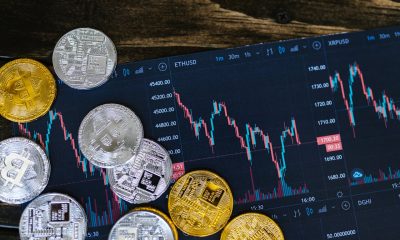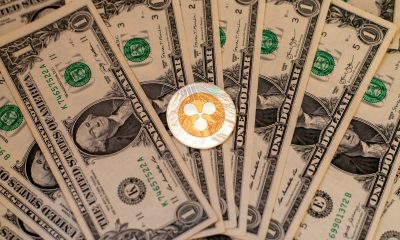Business
Fed’s Emergency Rate Cuts: A Debt Lifeline or a Long-Term Interest Trap?
The Fed’s emergency rate cuts aim to reduce government debt service costs but risk pushing long-term interest rates higher, worsening consumer debt burdens. Despite past rate cuts benefiting markets, Wall Street’s current optimism on growth may be misplaced. Rising delinquencies, inflation, and falling consumer confidence indicate potential economic weakness, threatening market stability.

So, the Fed has pivoted once again. Jerome Powell has done so many twists that Chubby Checker would be envious. Or better said, the Fed has panicked and now realized it is again offside on its inflation target. Hence, Powell feels compelled to move by outsized increments with his monetary policy.
And of course, Wall Street is celebrating that the 50bp rate cut means the Fed’s “Put” is back in full force. Therefore, prosperity is about to reign over the economy and markets—and it is ok to load up on stocks with reckless abandon. But that is a specious conclusion. Let me give you some reasons to remain on high alert for this economic house of cards to collapse.
First, investors fully understand how willing the Fed is to reduce the cost of money at the slightest hint of trouble in the labor market and the economy. In Pavlovian style, bond investors anticipate rates will be reduced to zero percent if needed. They have been well taught by Greenspan, Bernanke, Yellen, and now Powell that the Fed stands ready to take the bottom out of rates with alacrity. Therefore, Wall Street has already front-run all of the rate cuts in the pipeline. This means further interest rate cuts on the short end of the yield curve, which the Fed controls, will only serve to push rates on the long end of the yield curve higher.
For example, when the Fed started cutting rates in the summer of 2007, the Fed Funds Rate (FFR) was 5.25%, yet the 10-year note was still slightly above 5%. In a normal rate-cutting cycle both short and long-term rates fall. This reduction in borrowing costs lowers the burden on consumers and corporations’ debt service costs; thus, it helps remediate the recession.
In sharp contrast, this current rate-cutting cycle began with the Effective FFR at 5.3%, but the 10-year note had already anticipated Powell’s well-telegraphed cuts and was trading with a yield of just 3.6%, not 5%. Since the 10-year Treasury Note bond yield is already below 4%, there is not much room for the downside in rates at all–outside of a recession. Even if we have a soft landing and inflation gracefully retreats to the Fed’s target, nominal GDP growth should be around 4%, which is historically where long-term rates tend to trade.
Long-term interest rates are most concerned about inflation and insolvency. With $2 trillion deficits, $1 trillion of interest rate payments, and a $35 trillion National debt (125% of GDP and 720% of revenue), there are significant solvency concerns as never before realized. In addition, we have a Fed that is now aggressively trying to push the rate of inflation higher even though the level of prices in crushing the bottom four quintiles of consumers, and CPI is still well above Powell’s 2% target.
This is why the 10-year Note yield has increased by over 15bps since the Fed cut the FFR by 50bps on September 18th
That isn’t supposed to happen after a panic rate cut on the overnight interbank lending rate. Do not forget that fixed-rate mortgages are tied to 10-year Treasury. And, of course, that rate has been rising alongside Treasury debt in the past few days. This is really bad news for those who believe Powell is about to thaw off the frozen real estate market. August’s existing home sales were 4.2% lower than they were a year ago despite mortgage rates falling from 7.2% to 6.9%. The truth is people have been priced out of the home-buying market because prices, insurance, taxes, and maintenance costs are just too high. If lower mortgage rates didn’t boost buyer’s interest, how is that going to change now that borrowing costs are heading in the wrong direction?
So, the only scenario for interest rates to fall from this point would be a significant drop in the earnings and economic growth outlook. But is that what Wall Street really wants? To the contrary, investors are pricing in a 21 multiple on S&P 500 earnings growth of 15% next year! That cannot happen during a recession. Indeed, EPS will plunge instead.
We also have Quantitative Tightening ongoing, along with the reverse repo facility, which is now drained. And, even after this 50bp rate cut, the real level of the FFR remains firmly in positive territory. This means the liquidity in the bond market is running dry. The bottom line is, from a liquidity standpoint, an insolvency condition, and an inflation battle that has yet to be won; longer-term interest rates could very well rise instead of fall during this rate-cutting cycle. That is what is different this time.
Wall Street would be caught completely offside if rates rise. Powell’s efforts to stop disinflation do nothing to help consumers who have been already been significantly injured by the destruction of their purchasing power. They also have been hurt by rising delinquencies and defaults on their outstanding debt, and a spiking unemployment rate. It isn’t any wonder why consumer confidence in the economy tumbled in September–falling by the largest level in more than three years. According to the Conference Board, Consumer Confidence dropped to 98.7, down from 105.6 in August, the biggest one-month decline since August 2021 and far below the expectations of 104. Inflation is the primary issue and the Fed is pouring hot coals on the fire.
By the way, the last three times the Fed began a rate-cutting cycle by 50bps was in 2001, 2007, and 2020, but it didn’t work out so well for stocks. In 2020, the Fed quickly took rates from 1.75% to 0% in three months, but the S&P 500 still lost 35% of its value. Ok, that was a COVID-19 pandemic issue and is not relevant today. However, in both 2007 and 2001, the Fed started with an emergency 50bps rate cut as well. But within two years stocks lost 50% of their value. I’m not saying that history will repeat exactly, but it would be a big mistake to put your buy-and-hold 60/40 portfolio on autopilot just because Powell has supposedly has your back.
As it turns out, our current Fed Head is not data-dependent at all. He isn’t cutting rates because inflation has been vanquished. It isn’t even due to faltering GDP, or a higher-than-normal unemployment rate. And it is certainly not because asset bubbles are crumbling—at least not yet. It isn’t at all because of his omniscient belief that the stock market or the economy is about to fall apart.
Herein lies the truth behind Powell’s 50bp emergency rate cut. It is because the U.S. government cannot afford to pay a trillion dollars in debt service costs per year on our national debt. Powell is trying to bail out the Treasury and his buddy Janet Yellen by reducing the interest rate on T-bills. In other words, the Fed is lowering interest rates on what is the equivalent of a very dangerous adjustable-rate mortgage on US debt. But, in his efforts to make the Treasury solvent he has bankrupted and eviscerated the middle class.
It is time to close the door on this odious institution called the Federal Reserve. Until that becomes a reality, investors can protect themselves by owning the correct stocks, bonds, currencies, and commodities that best fit the dynamics between deflation and intractable inflation.
__
(Featured image by Ruth Enyedi via Unsplash)
DISCLAIMER: This article was written by a third party contributor and does not reflect the opinion of Born2Invest, its management, staff or its associates. Please review our disclaimer for more information.
This article may include forward-looking statements. These forward-looking statements generally are identified by the words “believe,” “project,” “estimate,” “become,” “plan,” “will,” and similar expressions, including with regards to potential earnings in the Empire Flippers affiliate program. These forward-looking statements involve known and unknown risks as well as uncertainties, including those discussed in the following cautionary statements and elsewhere in this article and on this site. Although the Company may believe that its expectations are based on reasonable assumptions, the actual results that the Company may achieve may differ materially from any forward-looking statements, which reflect the opinions of the management of the Company only as of the date hereof. Additionally, please make sure to read these important disclosures.

-

 Crowdfunding2 weeks ago
Crowdfunding2 weeks agoStar Citizen Funding Soars as 2025 Becomes Its Most Successful Year Yet
-

 Crypto1 day ago
Crypto1 day agoAAVE Community Challenges Aave Labs Over Governance and Control
-

 Crypto1 week ago
Crypto1 week agoCrypto ETF Inflows Signal Renewed Market Confidence
-

 Biotech4 days ago
Biotech4 days agoSpain Joins First EU Joint Clinical Assessment Under New Health Technology Regulation

























